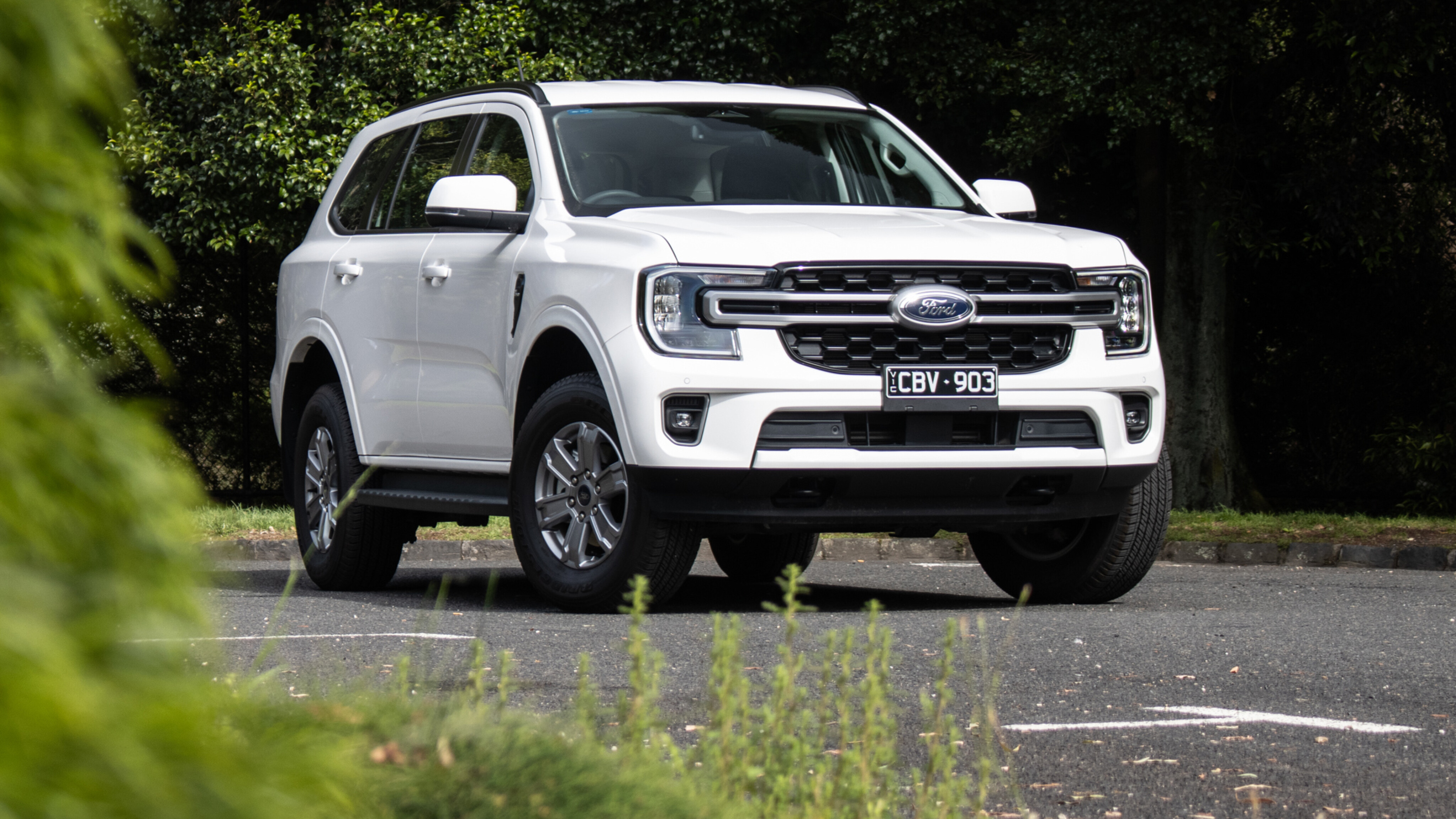
Score breakdown
Things we like
- Cushy ride
- Fuel efficiency
- Towing capability
Not so much
- Cabin lacks sparkle
- Price for 4x2 comparable to 4x4 rivals
- Engine clatter
Between inflation and rising production costs, the sticker prices of new cars seem to be increasing at a faster rate than they used to.
It’s a situation that isn’t helped by automakers who are keen to boost margins by steering customers toward feature-rich (and profit-rich) variants while simultaneously subtracting viable options from the bottom end of the product pool.
Mercifully, Ford’s Everest proves there’s still some good buying at the lower reaches of the spec-trum. The second-gen Everest has certainly impressed us since its 2022 arrival, but thus far the bulk of our experience with Ford’s COTY-winning SUV wagon has been at the upper end of the model walk-up.
However, a week in the boggo Ambiente demonstrated that the Everest is still a winner even when the front differential gets subtracted.
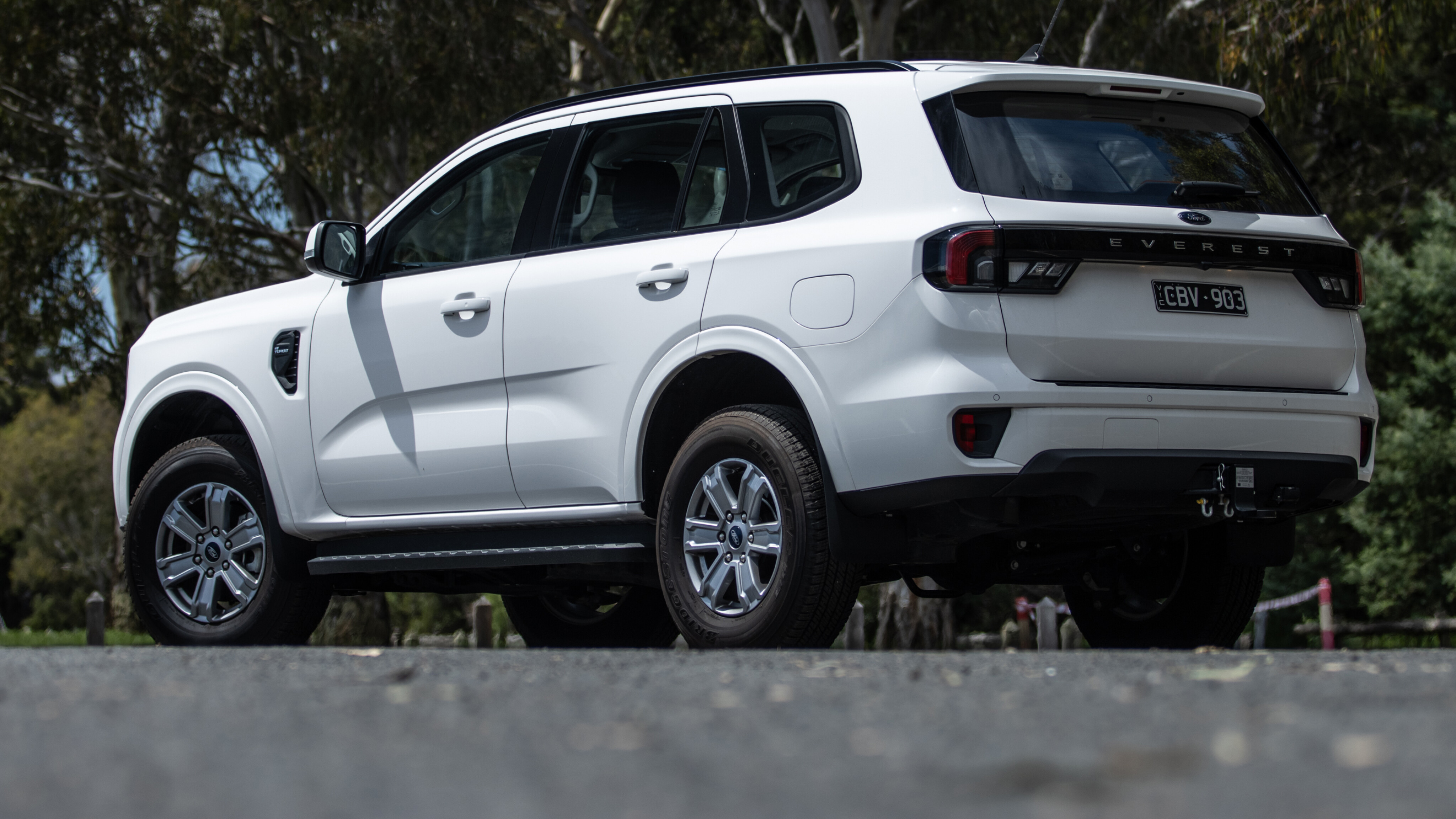
JUMP AHEAD
- How much is it, and what do you get?
- How do rivals compare on value?
- What’s it like inside?
- What is it like to drive?
- How is it on fuel?
- How safe is it?
- How long is the warranty and what are the running costs like?
- VERDICT
How much is it, and what do you get?
The Ford Everest Ambiente RWD retails for $53,990 before on-road costs, making it the most affordable in the Everest range.
While you miss out on four-wheel drive traction, you still get the same 3.5-tonne tow rating and 154kW/500Nm 2.0-litre bi-turbo diesel as the 4WD model.
You also receive a 10.1-inch infotainment screen rather than the 12-incher of the Trend, Sport, Platinum and Wildtrak grades, but the 8.0-inch LCD digi-dash provides some tech sparkle that you wouldn’t normally expect to see in a base model body-on-frame SUV.

Dual-zone climate control is standard and pipes air to all three rows, and the front seats are manually adjusted. The wheels are 17-inch alloys, making them the smallest rims in the range but, as we’ll get to in just a sec, that’s actually not a bad thing.
The Ambiente is a five-seater as standard, but for an extra $1200 a third row of seats can be optioned in, as our test car shows.
Our tester was also equipped with the optional tow pack, priced at $1900, bringing the total as-tested sticker to $57,090 excluding on-road costs.
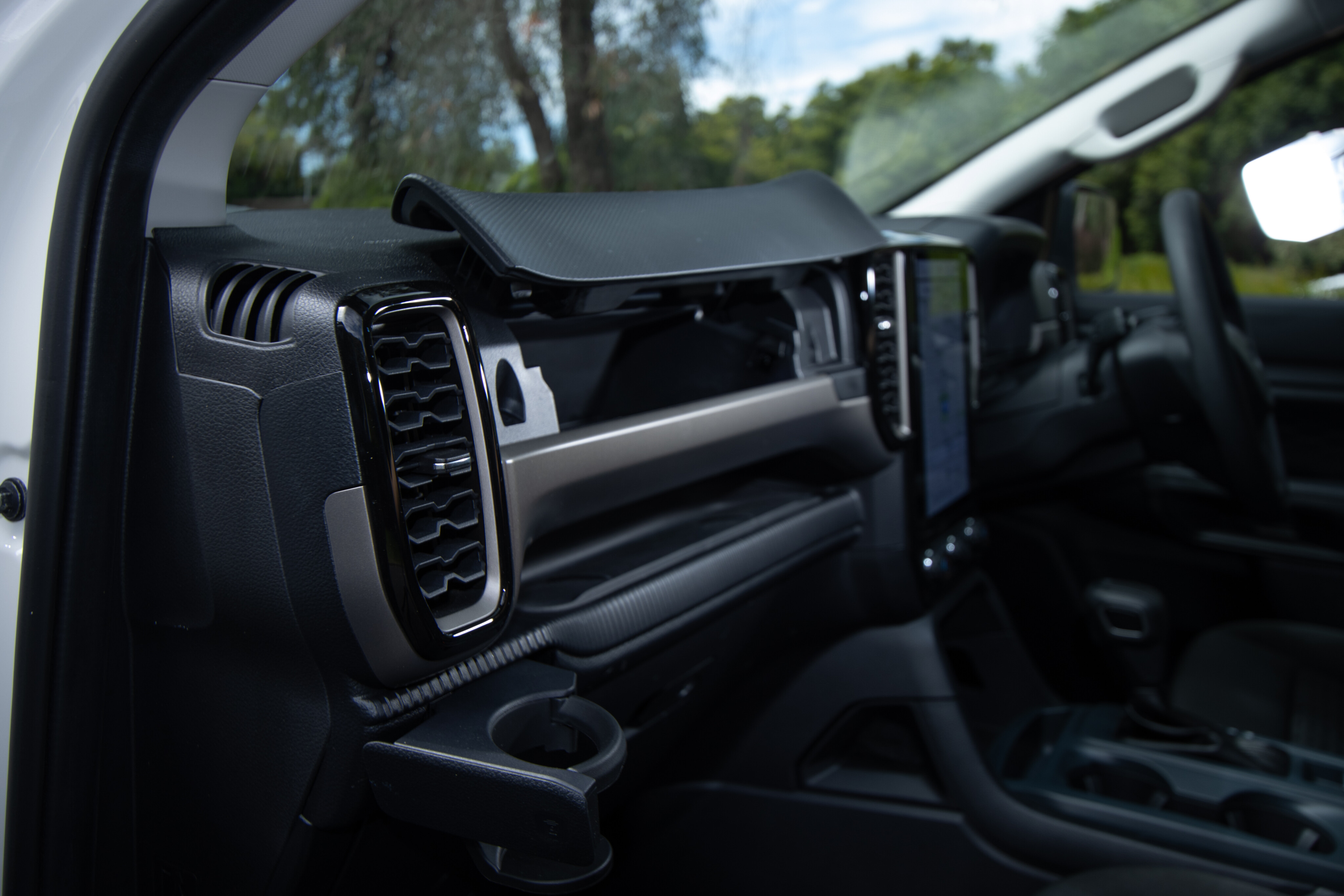
How do rivals compare on value?
Direct rivals include the Isuzu MU-X, Toyota Fortuner and Mitsubishi Pajero Sport, with all following the same format of being based on a commercial ute, albeit with a coil-sprung rear end and wagon body.
The Fortuner is priced almost lineball with the Everest Ambiente RWD five-seater at $53,785 before on-road costs, but it edges ahead on value by virtue of its standard-fit 4x4 driveline – 4WD is a $5K option for the Everest Ambiente.
Meanwhile, Mitsubishi’s Pajero Sport GLX RWD is a $44,940 bargain and the Isuzu MU-X LS-M RWD retails for $48,900 (both excluding on-road costs).
Is the Everest sub-par value, then? Considering all of these rivals lag significantly behind the Ford on cabin comfort, equipment and driveability, perhaps not…
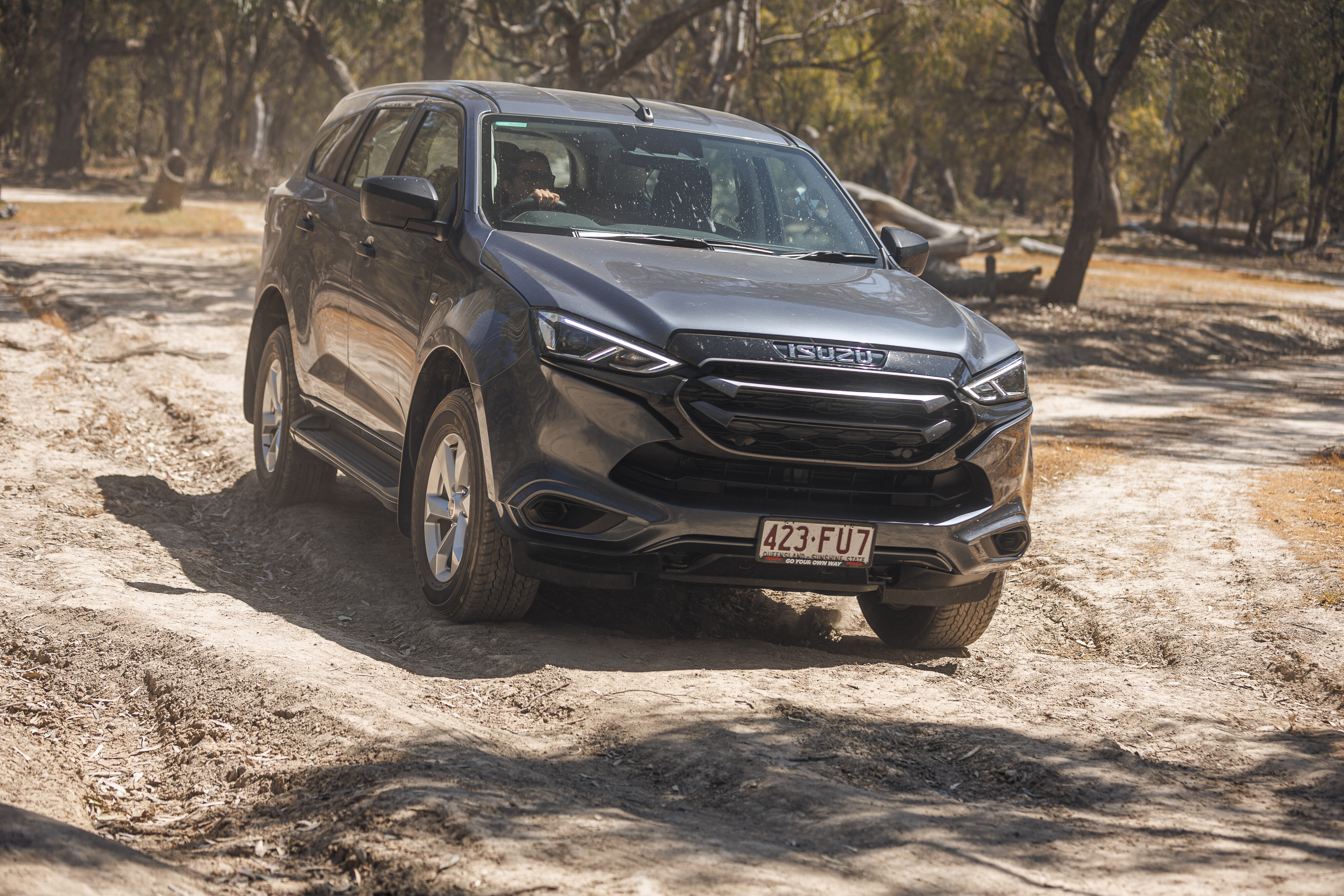
What’s it like inside?
The inside of the Everest Ambiente is a little like the inside of a Kmart: unexciting and unpretentious, but the basics are well covered.
Sure, you miss out on the 12-inch infotainment display of the Trend, Sport, Platinum and Wildtrack, but the 10.1-inch unit you get instead retains all of the crucial functions including sat-nav, wireless Android Auto/Apple CarPlay and sits above a wireless phone charging pad. The audio-visual department is pretty well stocked, then.
Perhaps snobs will dislike the transmission selector stick of the rear-drive Ambiente, which looks quaintly old-fashioned when compared to the low-profile puck of 4WD Everests, and the steering wheel is bare urethane.
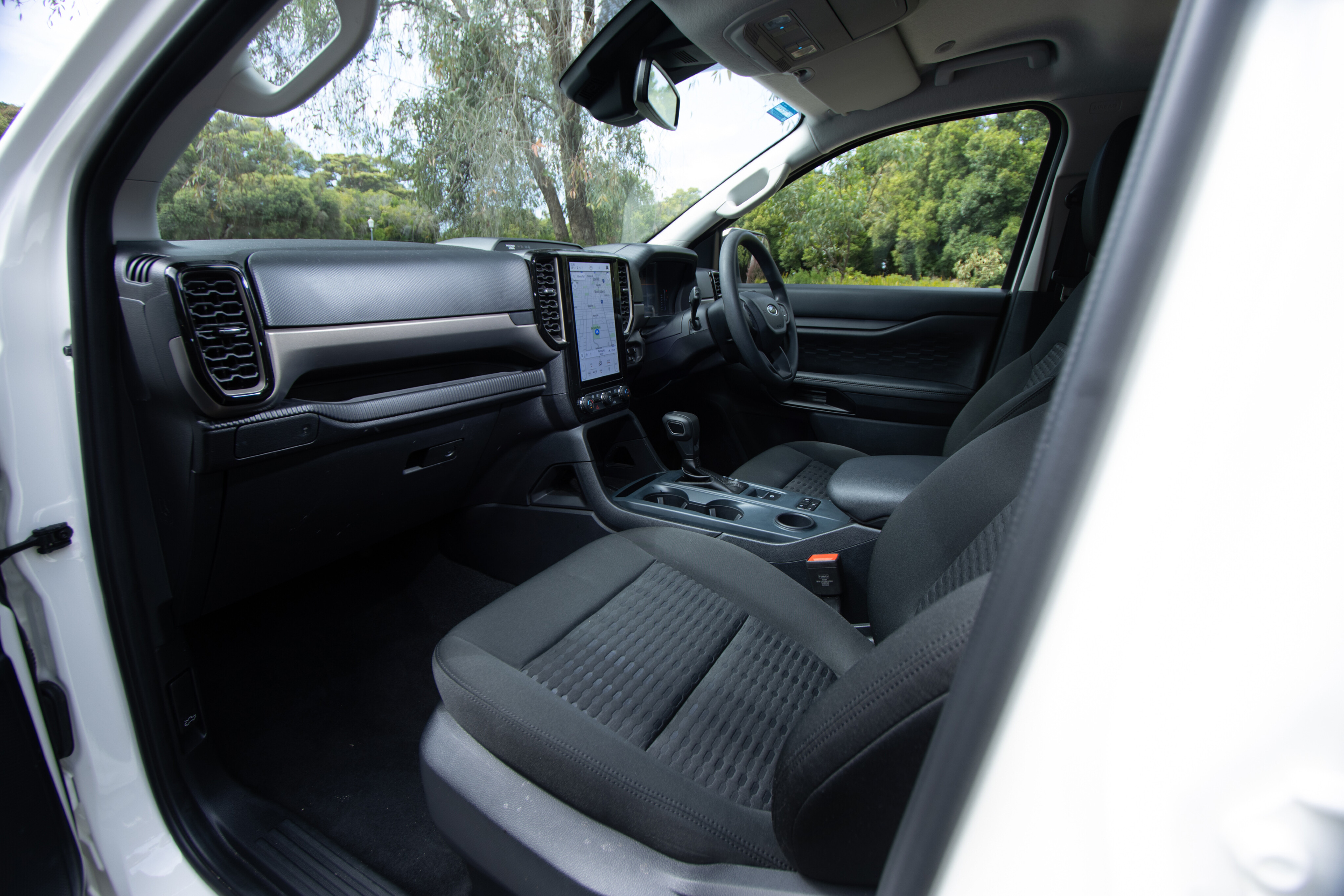
That said, it’s nice urethane, and sometimes a well-executed moulded plastic wheel can feel more pleasant to the fingertips than one wrapped in cheap pleather. This is one of those times, and the same rule applies to the Everest’s hardy fabric upholstery.
As for space, it’s abundant. Our tester was optioned with the seven-seat config, and even the third row is commodious enough for a small-to-medium adult.
Same goes for luggage capacity. When the third row is raised there’s a useful 259L for a couple of suitcases or a decent amount of grocery bags, while dropping the third row provides a sizable 898L – Which is the same capacity as the five-seat Everest Ambiente with all seats up. All rows down, you get a capacious 1816L cargo volume.

What is it like to drive?
Developing 154kW and 500Nm, the bi-turbo 2.0-litre turbo diesel under the Everest’s bonnet is the most powerful in the realm of body-on-frame 4x2 wagons.
Connected to Ford’s 10-speed automatic – no manual is available – it’s also got a gearing advantage over its closest rival, the six-speed-equipped Toyota Fortuner. That trans endows the big Everest with excellent around-town driveability, with an abundance of ratios that rarely sees the engine revving outside of the meatiest zone of its torque band, and shift logic that avoids hunting.
It means that when driven normally, the Everest feels pretty relaxed despite only having two litres of displacement up front, and that has the happy side-effect of rather good fuel efficiency as well – have a read of the next section for more on that.
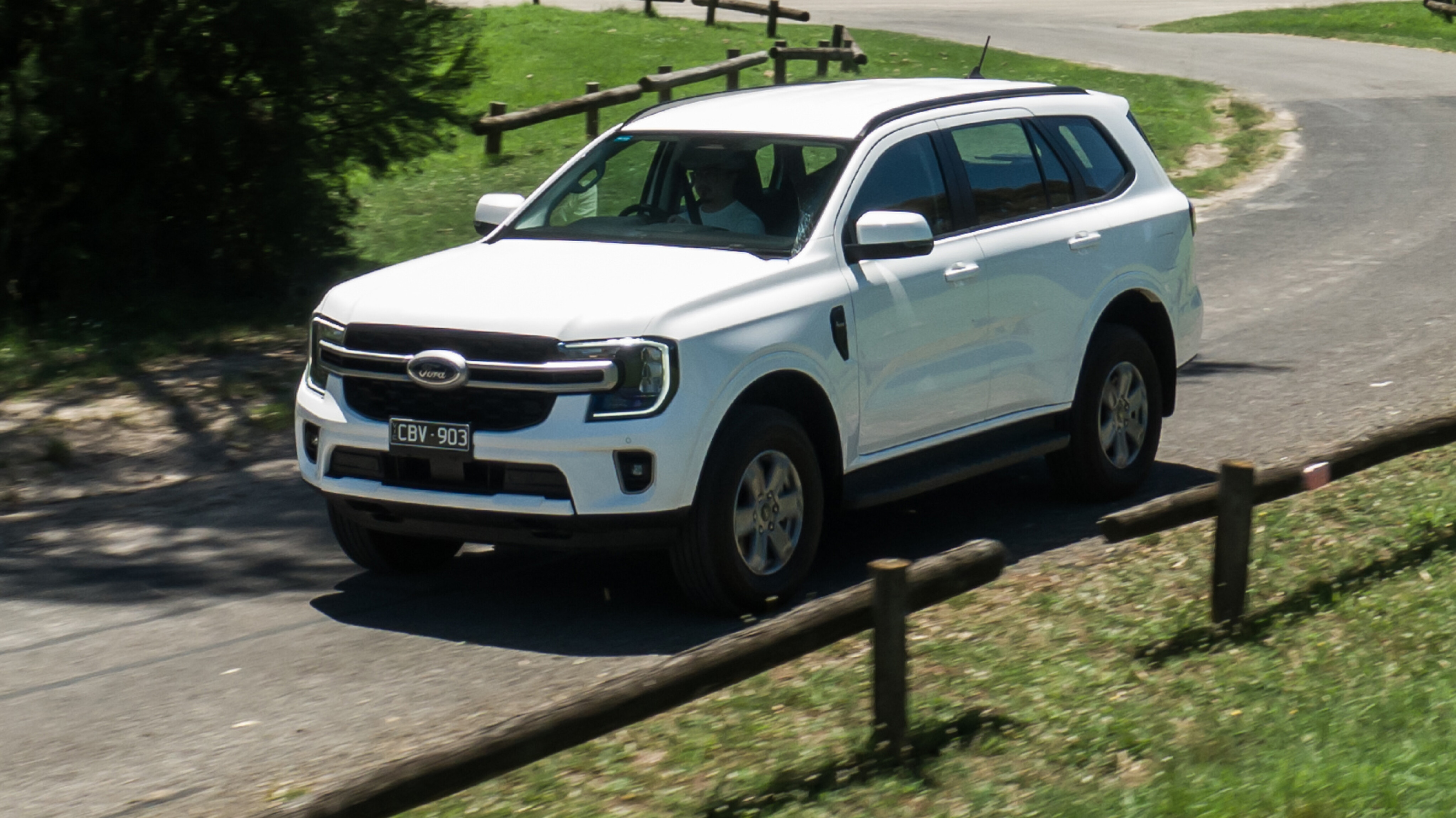
However, that 2.0L is not the quietest diesel four-pot in the large SUV segment, and Ford should try and quell the gravelly note that penetrates through the firewall. Given most other aspects of the Everest are quite refined, engine noise spoils the ambience.
Ride quality is a big plus though. The Ambiente is the only Everest variant to roll on 17-inch wheels, and the chubby tyre sidewalls they bring give a plushness to the suspension that helps smooth out fractured tarmac with ease.
But the biggest drawcard should be that massive 3500kg tow rating. Anyone towing a horse float, a boat or a caravan will see that number and nod, and as the lightest member of the Everest family, the Ambiente RWD also has the highest payload as well, with 741kg able to be carried within the vehicle.
That’s an 83kg advantage over the V6-powered Everest Platinum, which equates to either a lot more provisions, a lot more fuel, or an entire extra human – important considerations for long-distance tourers.
If any of the terms in this section have left you scratching your head, these articles will help bring you up to speed!

How is it on fuel?
Ford quotes a combined fuel consumption of 7.1 L/100km for the rear-drive Everest Ambiente, and considering we managed to return a 7.4L/100km result across our 100km test loop (consisting of 70 per cent urban and 30 per cent highway running), Ford’s factory claim seems pretty honest.
It’s a decent result for a 2.26-tonne behemoth and one that should deliver a real-world range of 1081km from the Everest’s 80-litre tank.
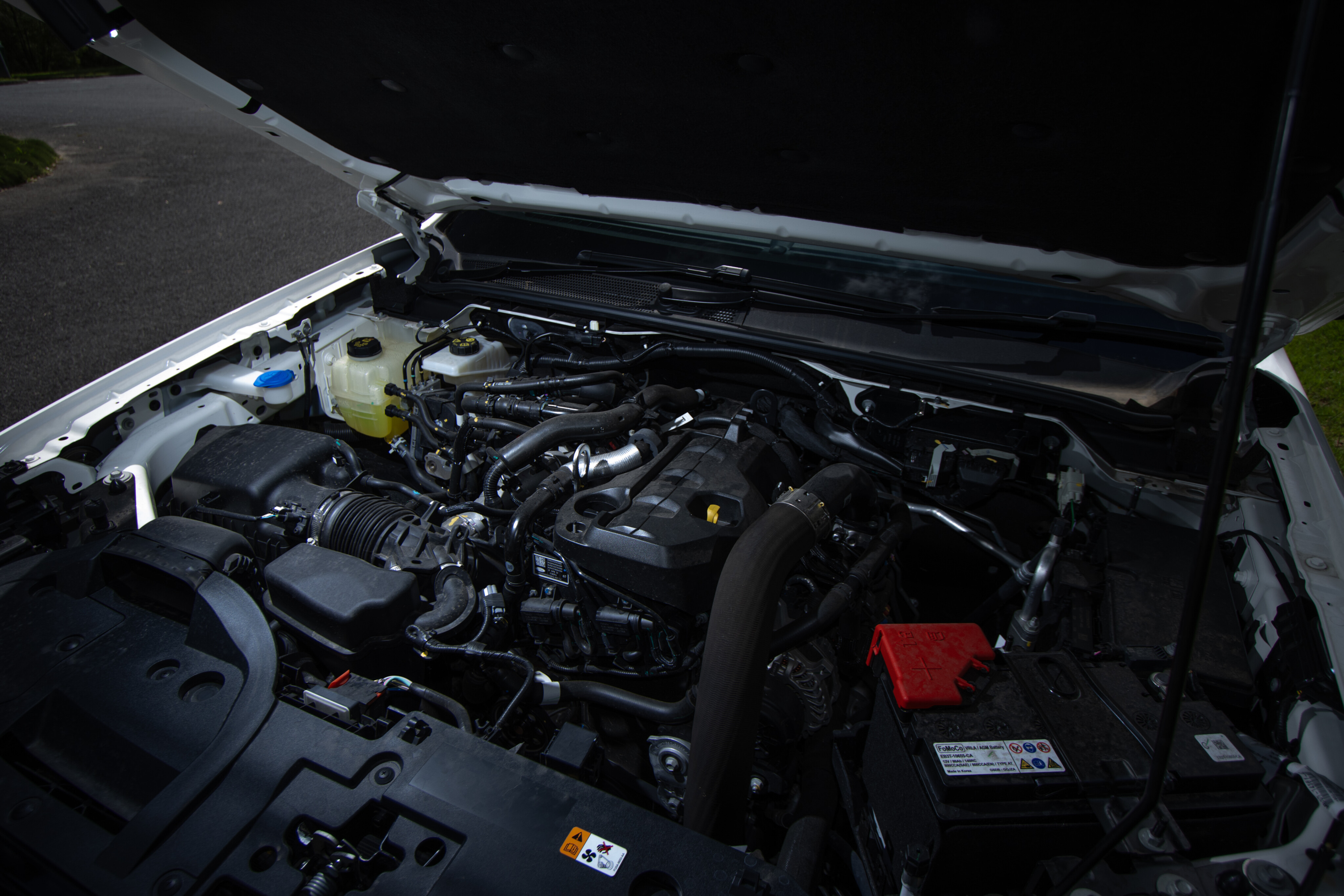
How safe is it?
ANCAP has awarded the Everest a full five-star crash safety rating, and all variants – including the Ambiente – come standard with safety gear like nine airbags, front and rear AEB, frontal collision warning, active cruise control, lane-keep assist, blind-spot monitoring, front and rear parking sensors, rear cross-traffic alert and a reversing camera.
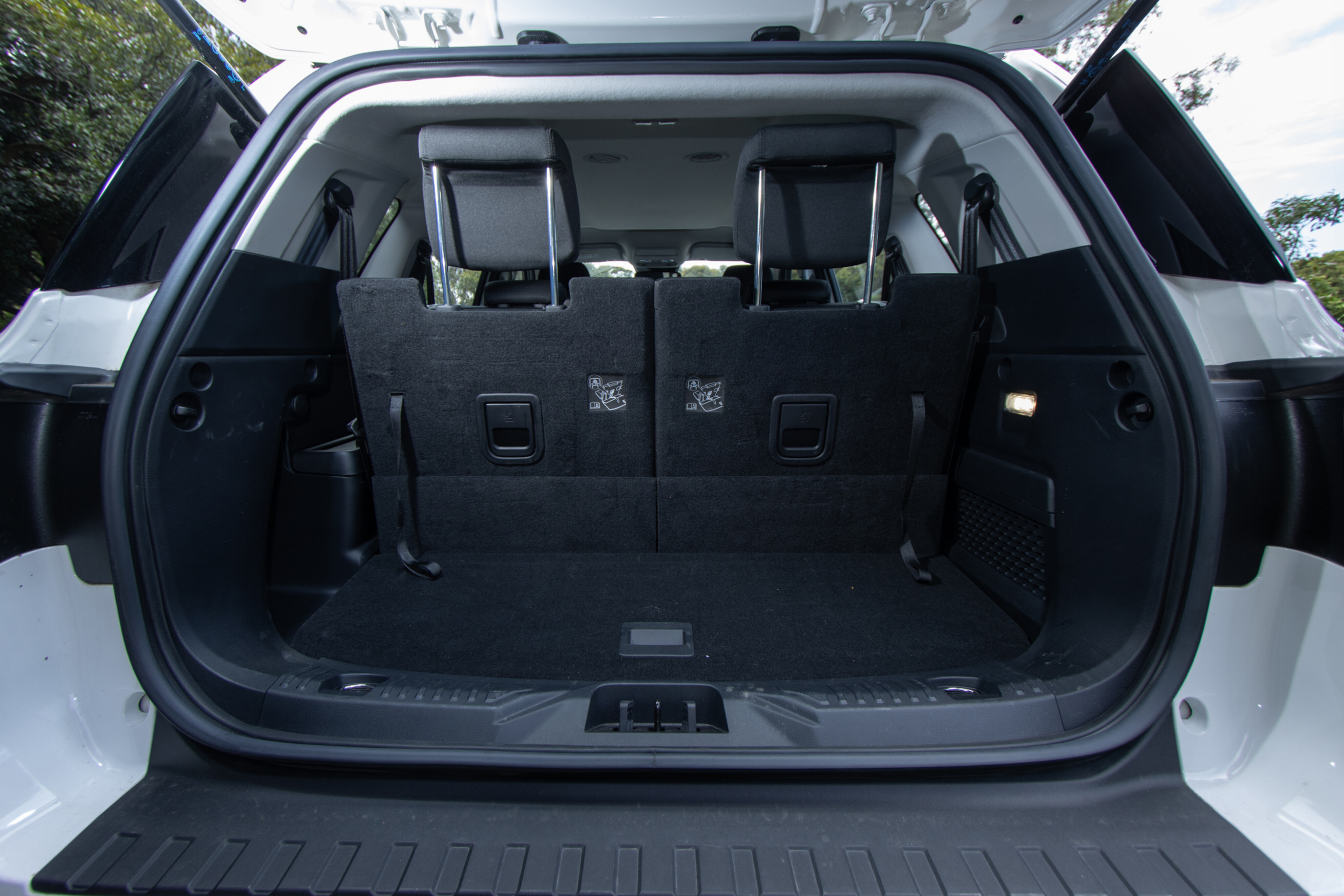
How long is the warranty and what are the running costs like?
Ford’s factory warranty lasts for five years with no kilometre limit.
Maintenance intervals are every 15,000km or 12 months, with servicing costs tallying at $1345 for the first three years/45,000km of ownership, and $2480 for the first five years/75,000km (the fourth service is a sizeable $735 expense).
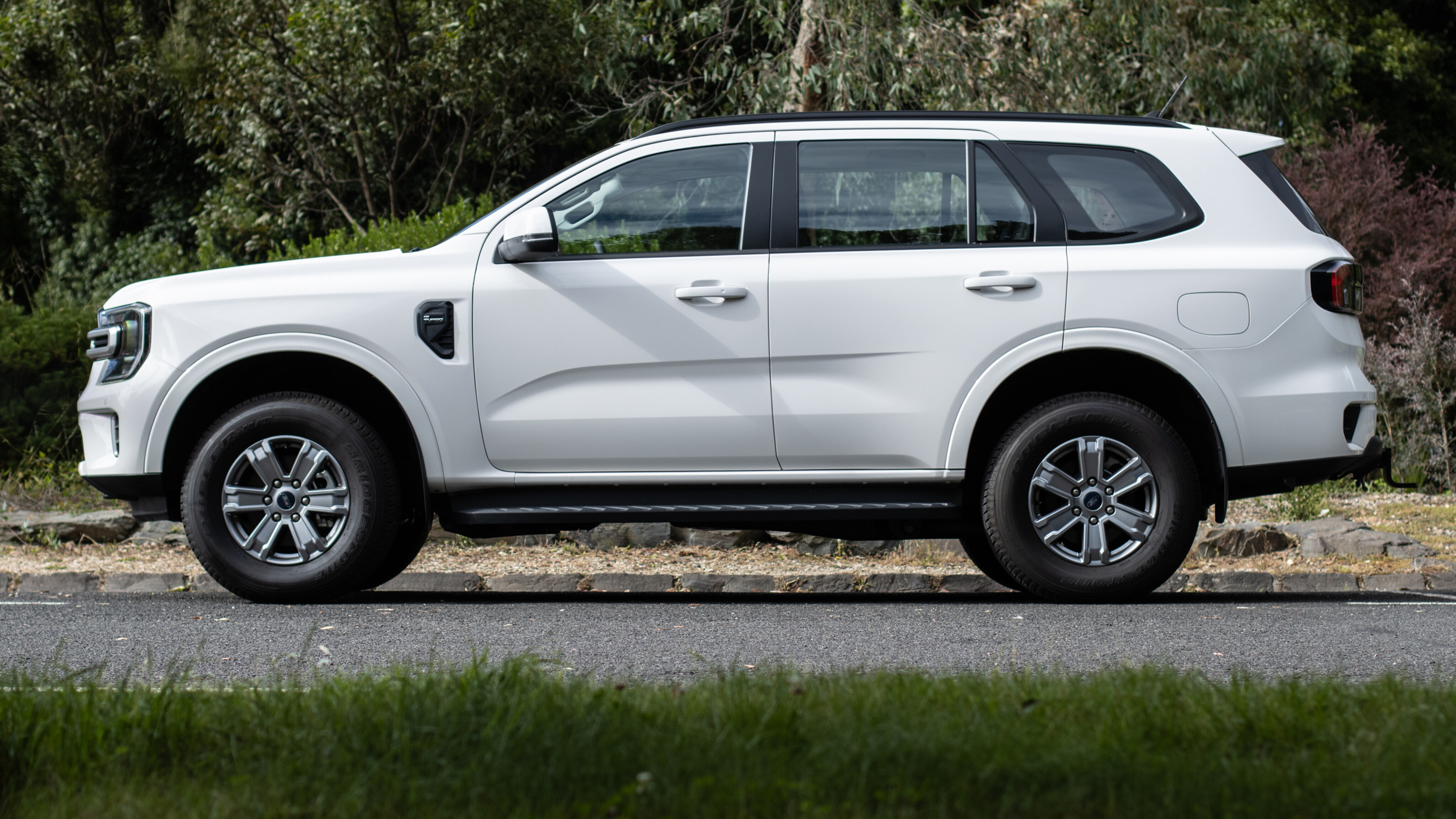
VERDICT
For those hunting a capable and comfortable tow rig with no expectations of going too far off the beaten track, the rear-drive Everest Ambiente has much to recommend it.
Despite its base model status, it feels more well-rounded and complete than other entry-level rivals and the driving experience is more akin to the very civilised Toyota Prado than it is to any other ute-based wagon.
Couple those virtues with very respectable real-world fuel economy, and the cheapest Everest shines.
Score breakdown
Things we like
- Cushy ride
- Fuel efficiency
- Towing capability
Not so much
- Cabin lacks sparkle
- Price for 4x2 comparable to 4x4 rivals
- Engine clatter

COMMENTS